Part 2 - Build a Homesite (Bahay Kubo Concept)
ANNEX 1 - Dr Juan M Flavier: "Doctor to the Barrio" Leaves a Legacy
ANNEX 2 - Features of Development Communication
 Death of large scale agriculture in agrarian societies
Death of large scale agriculture in agrarian societies Have a compass at hand, and remember that an-east-to-west orientation of rows does not only increase yield of your regular crop, but allows you to practice layered or storey cropping as well - thus, enabling you to increase the effective area of your farm. Incidence to pest and diseases is greatly reduced by this practice. Crop quality is likewise improved such as sweetness and size.
There's one drawback though. When it comes to sloping terrain, it is advisable to observe the rules of contour farming that minimizes soil erosion and conserves soil moisture. Consult your nearest agriculturist. Learn from local farm models.
2. Inter-cropping and alternate cropping. In peanut-and-corn alternate planting, peanut is a nitrogen fixer and provides nitrate fertilizer to its companion crop - corn. Corn on the other hand, is a heavy nitrogen feeder. When planted alone and repeatedly, the tendency is that the soil becomes depleted of nitrogen. Peanut benefits from irrigation given to the corn, and gains protection from excessive wind and dryness from its taller companion. And to the farmer, having two crops is like doubling the effective area of his farm, not to mention the maximum use of space in double cropping, which also benefit the animals with corn fodder and peanut "hay."

- tomato and pechay
- sugarcane with mungbeans
- coconut and coffee or cacao
- coconut and lansones
- stringbeans (pole sitao) and rice
- papaya and pineapple
- peanut, corn and sweet potato
- pigeon pea (kadios) and rice
- grape on hedge and cabbage or cauliflower
- Follow recommended use of the land, the crops to plant, cropping system to follow. Consult local agriculturists, successful farmers.
- Go with the seasons and be part of community farming - when to prepare the seedbed, plant, irrigate, harvest. Off-season planting is expensive and risky, and is done only for special reasons.

- Fallowing. Give your farm a break. Nature takes a rest usually in summer. You can hear the land breath, the cracks harbor aestivating frogs, fish, crustaceans, snails and other organisms. Break the life cycle of pest and disease organisms. Give yourself too, a break.
- Plow after the first heavy rain to turn over the weeds, converting them into organic fertilizer, and keeping their population down.
- Plant native varieties, they are sturdier and simpler to take care. Less fertilizer, less pesticide, if needed. There is a growing market for native crops and animals. People are avoiding pesticide and antibiotic residues, more so, genetically modified crops such as Bt Corn.
- Avoid hybrids as much as possible. They are heavy soil nutrient feeders. They are genetically unstable, you cannot make your own binhi (planting material) out of your harvest.
- Harvest on time and promptly
- Know the shelf life of your harvest. For perishables, sell or process immediately.
- Use proper tools and equipment
- Have your harvest properly dried, packaged and stored, specially if you plan to keep it for some time. Keep it away from the elements and pests.
- Consider quality, not only quantity.
6. Use by-products efficiently. Farm wastes are converted into many useful products.
- Rice hull and sugarcane bagasse for fuel.
- Corn stover, rice hay for livestock feeds.
- Rice and corn bran for poultry and piggery feeds.
- Crop residues, and weeds for composting.
- Banana leaves, rice hay for mushroom growing
- Tobacco stalk for pest control (spray or dust)
- Coconut shell for charcoal (activated carbon)
- Rice hay for mulching (bed cover of garlic, onions, other crops)
- Manure as organic fertilizer and composting
- Palay-isdaan (rice and tilapia, hito, dalag, gurami)
- Sorjan farming - alternate upland and lowland culture. Field is divided into strip, alternately elevated and depressed.
- Piggery and biogas digester for biofuel. Biofuel to run your own generator.
- Poultry on range, feedlot for cattle, fishpond, field and vegetable crops.
- Agro-tourism. Combine farming with ecology. Make farming attractive to tourists, specially children. Let them experience planting, harvesting, catching fish or butterflies. Have you farm suitable for camping.
Practical farming is the answer to many problems we encounter today such as
- High cost of production
- Pollution from farm chemicals
- Loss of farm productivity
- Decreasing profitability
- Harmful residues in crops and animals
- Loss of soil fertility, soil loss due to erosion
- Idle farms, abandonment of farms
- Desertification - farm land to wasteland
- Unemployment and underemployment
- High dependence on mechanization and expensive input
- Technology transfer gap
0019.JPG)
These gardening models have been developed from studies and observations of successful projects locally and abroad. They serve as guide to participants and listeners of Paaralang Bayan sa Himpapawid (School-on-Air) to help them in their projects, particularly in times of food scarcity, such as the present situation caused by the El Niño phenomenon.
But even during normal times, these models are useful to gardening enthusiasts, especially children and senior citizens who find this hobby highly rewarding to health and leisure, and as a source of livelihood, notwithstanding. Those who are participating in projects in food production and environmental beautification, such as the Clean and Green Movement, and Green Revolution projects, will find these models similarly valuable.
One however, can modify them according to the peculiarity of his place, and in fact, he can combine those models that are compatible so as to develop and integrate them into a larger and more diversified plan.
One who is familiar with the popular Filipino composition Bahay Kubo, can readily identify the plants mentioned therein with those that are cited in these models. And in his mind would appear an imagery of the scenario in which he can fit these models accordingly.
Here is a plan of a Homesite - an ideal integrated garden around a home in a rural setting. Compare this with Bahay Kubo. Update it. Innovate it according to your concept, situation and needs. Allow innovations as long as these do not lose the essence of the plan. You can even expand the area, adding more features to it.
In effect, this Homesite model becomes a model farm, a Homestead - one that has economic and ecological attributes that characterize the concept of sustainable productivity cum aesthetics and educational values.
Things appeared simple then. But time has changed. We know that sugarcane has long been planted with rice, legumes and vegetables, but it sounds like new in modern parlance with terms like crop rotation or crop diversification. Making of wine, vinegar and confectionary products are under agro-industry. Because the process generates profit, we call this value-added advantage. So with the tax that is now slap manufactured products. To determine the business viability of a business we determine its internal rate of return (IIR) and its return on investment (ROI). Brewing today is agro-processing and an agribusiness. And my father would be called not just a proprietor, but a business partner since family members and relatives share in the operation of the business. Possibly his title today would be general manager or CEO.
Things in my father’s time had become outdated, shifting away from traditional to modern. But it is not only a matter of terminology; it is change in business structure and system.
Big business is name of the game
Like many other village industries, the local breweries bowed out to companies that now control the production of commercial and imported brands. The proliferation of many products and the inability of local products to keep up with the growing sophisticated market have further brought their doom. Definitely under such circumstances the small players under the business parameter of economics of scale find themselves at the losing end. Bigness is name of the game.
Monopolies and cartels now control much of the economy here and in other countries. Transnational companies have grown into giants, that one big company far outweighs the economy of a small country. Total business assets of North Carolina is more than that of Argentina, which is one of the biggest countries of the world in terms of land area and population.
Today agribusiness and biotechnology are corporate terms that are difficult to translate on the village level and by small entrepreneurs.
All these fit well into the present capitalistic system that is greatly under the influence of IMF-WB on borrower-countries, and terms of trade agreements imposed by GATT-WTO on its members, many of which reluctantly signed the its ratification. Under the capitalistic system there has been a shift of countryside industries into the hands of corporations, national and transnational. Take these examples.
Coffee PHOTO is raised by millions of small farmers all over the world, but it is monopolized by such giant companies like Nestle and Consolidated Foods. Cacao is likewise a small farmer’s crop, but controlled by similar multinationals. So with tea, the world’s second most popular beverage.
Unfortunately this inequity in the sharing of the benefits of these industries is exacerbated by the absence of a strong and effective mass-based program that emphasizes countryside development through livelihood and employment opportunities. Multi-national monopolies thrive on such business climate and biased laws and program in their favor.
We import rice, corn, sugar, fruits, meat and poultry, fish, fruits and vegetables in both fresh and processed products, when in the sixties and seventies we were exporters of the same products. We were then second or third in ranking after Japan in terms of economic development.
“Small business is beautiful” (PHOTO: EC Schumacher, author)
There must be something wrong somewhere. But while we diagnose our country’s ills, we should make references to our own successes, and even come to a point of looking on models within our reach and capability to imitate. There are “unsung heroes” in practically all fields from business, agriculture, manufacturing to folk medicine and leadership. Perhaps for us who belong to the older generation, it is good to feel whenever we recall old times when life was better – and better lived.
Biopiracy and technopiracy
(Biopiracy is a situation where indigenous knowledge of nature, originating with indigenous peoples, is used by others for profit, without permission from and with little or no compensation or recognition to the indigenous people themselves.Informal or “underground” economy. Internet)
Informal or “underground” economy is the lifeblood of rural communities. They are the seat of tradition, rituals, barter and other informal transactions. They link the farm and the kitchen and the local market. They are versions of agro-processing and agribusiness on the scale of proprietorship and family business. They strengthen family and community ties.
It is for this reason that the NACIDA – National Cottage Industry Development Authority – was organized. And truly, it brought economic prosperity to thousands of entrepreneurs and families in the fifties to sixties.
South Korea for one in the late sixties, saw our PRRM and NACIDA models and improved on them with their SAEMAUL UNDONG development program which ultimately brought tremendous progress in its war-torn countryside. In Tanzania, one can glimpse some similarities of our program with LAEDZA BATANI (Wake up, it’s time to get moving) rural development program. The Philippines stood as an international model, recognized by the WB and ADB, for our countryside development program – cottage industries, farmers’ associations, electric cooperatives, rice and corn production program, which made us agricultural exporters. So with our biotechnology in farm waste utilization through composting with the use of Trichoderma inoculation, and in natural rice farming by growing Azolla in lieu of urea and ammonium nitrate. Another area of biotechnology is in the retting of maguey fiber, which is a work of decomposing bacteria.

The Saemaul Undong, also known as the New Village Movement, Saemaul Movement or Saema'eul Movement, was a political initiative launched on April 22, 1970 by South Korean president Park Chung-hee to modernize the rural South Korean economy. The movement is being revived today as a model for developing countries such as Cambodia, 2015 (photo)
Today there are many opportunities of biotechnology that can be tapped and packaged for small and medium size businesses and organized groups of entrepreneurs and farmers. These opportunities also pose a big challenge to the academe and to enterprising researchers in government and private institutions.
Important organisms for biotechnology
• Spirulina (blue-green alga or Eubacterium) - high protein, elixir.• Chlorella (green alga) – vegetable, oxygen generator• Pleurotus and Volvariella (fungi, mushroom) – anti-cancer food.• Azolla-Anabaena (eubacterium with fern)– natural fertilizer• Porphyra, red seaweed, high-value food (“food of the gods”)• Hormophysa (brown alga) – antibiotics• Eucheuma (red alga) – source of carageenan, food conditioner• Gracillaria (brown alga) – source of agar, alginate• Sargassum (brown alga) – fertilizer and fodder• Saccharomyces (fungus, yeast) – fermentation• Aspergillus (fungus) – medicine, fermentation• Penicillium (fungus) – antibiotics. Caulerpa (green alga) – salad• Leuconostoc (bacterium) – nata de coco, fermentation of vegetables• Acetobacter (bacterium) – acetic acid manufacture• Rhizobium (bacterium) – Nitrogen fixer for soil fertility• Nostoc (BGA or Eubacterium) – bio-fertilizer• Ganoderma (tree fungus) – food supplement, reducer• Halobacterium and Halococcus (bacteria)- bagoong and patis making• Lactobacillus (bacterium) lactic fermentation, yogurt making• Candida (yeast) – source of lysine, vitamins, lipids and inveratse• Torulopsis (yeast) – leavening of puto and banana cake• Trichoderma (fungus) – innoculant to accelerate composting time.
Before I go proceed allow me to present a background of biotechnology in relation with the history of agriculture.
Three Green Revolutions
The First Green Revolution took place when man turned hunter to farmer, which also marked the birth of human settlement, in the Fertile Crescent, (PHOTO) between the Tigris and Euphrates rivers where the present war in Iraq is taking place.
The Second Green Revolution is characterized by the improvement of farming techniques and the expansion of agricultural frontiers, resulting in the conversion of millions of hectares of land into agriculture all over the world. This era lasted for some three hundred years, and marched with the advent of modern science and technology, which gave rise to Industrial Revolution. Its momentum however, was interrupted by two world wars.
Then in the second part of the last century, a Third Green Revolution was born. With the strides of science and technology, agricultural production tremendously increased. Economic prosperity followed specially among post-colonial nations - the Third World - which took the cudgels of self rule, earning respect in the international community, and gaining the status of Newly Industrialized Nations (NICs) one after another.
Towards the end of the last century, the age of biotechnology and genetic engineering arrived. Here the conventions of agriculture have been radically changed. For example, desirable traits are transferred through gene splicing so that trans-generic – even trans-kingdom – trait combinations are now possible. Bt Corn, a genetically modified corn that carries the caterpillar-repelling gene of a bacterium, Bacillus thuringiensis, exemplifies such case. Penicillin-producing microorganisms are not only screened from among naturally existing species and strains; they are genetically engineered with super genes from other organisms known for their superior production efficiency.

Biotechnology for people and environment
The need for food and other commodities is ever increasing. Together with conventional agriculture, biotechnology will be contributing significantly to the production of food, medicine, raw materials for the industry, and in keeping a balanced ecology. This indeed will offer relief to the following scenarios:
1. World’s population increases from today’s 8 billion to 10 billion in 10 years.
2. Agricultural frontiers have virtually reached dead end.
3. Farmlands continue to shrink, giving way to settlements and industry,
while facing the onslaught of erosion and desertification
4. Pollution is getting worse in air, land and water. (Photos: right, garbage clandestinely exported by Canada to the Philippines)
These scenarios seem to revive the Apocalyptic Malthusian theory, which haunts many poor countries - and even industrialized countries where population density is high. We are faced with the problem on how to cope up with a crisis brought about by the population-technology-environment tandem that has started showing its fangs at the close of the 20th century.
Now we talk in terms of quality life, health and longevity, adequate food supply and proper nutrition - other human development indices (HDI), notwithstanding.
--------------------------------------------------------------------------------------------
As scientists open the new avenue of genetic engineering to produce genetically modified organisms for food, medicine and industry, entrepreneurs are shaping up a different kind of Green Revolution on the old country road – the employment of veritable, beneficial microorganisms to answer the basic needs of the vast majority of the world’s population.
Green Revolution for the masses
This Green Revolution has to be addressed to the masses. The thrust in biotechnology development must have a strong social objective. This must include the integration of the mass-based enterprises with research and development (R&D). Like the defunct NACIDA, a program for today should be cottage-based, not only corporate-based. Genetic engineering should be explored not for scientific reasons or for profit motives alone, but purposely for social objectives that could spur socio-economic growth on the countryside, and the improvement the lives of millions of people.
Alternative Food
These lowly organisms will be farmed like conventional crops. In fact, today mushroom growing is among the high-tech agricultural industries, from spawn culture to canning.
Spirulina, a cyanobacterium, has been grown for food since ancient times by the Aztecs in Mexico and in early civilizations in the Middle East. Its culture is being revived on estuaries and lakes, and even in small scale, in tanks and ponds. Today the product is sold as “vegetablet.”
Seaweeds, on the other hand, are being grown extensively and involving many species, from Caulerpa to Nori. (PHOTO below) Seaweed farming has caught worldwide attention in this last two decades, not only because it offers a good source of food, but also industrial products like carageenan and agar.
Environmental Rehabilitation
In the remote case that a nuclear explosion occurs, how possible is it to produce food and other needs in the bomb shelters deep underground? Fiction as it may seem, the lowly microorganisms have an important role. For one, mushrooms do not need sunlight to grow. Take it from the mushroom-growing termites. Another potential crop is Chlorella. While it produces fresh biomass as food it is also an excellent oxygen generator, oxygen being the by-product of photosynthesis. But where will Chlorella get light? Unlike higher plants, this green alga can make use of light and heat energy from an artificial source like fluorescent lamp.
Sewage treatment with the use of algae is now common in the outskirts of big cities like New York and Tokyo. From the air the open sewer is a series of reservoirs through which the sewage is treated until the spent material is released. The sludge is converted into organic fertilizer and soil conditioner, while the water is safely released into the natural environment such as a lake or river.
Marine seaweeds are known to grow in clean water. Their culture necessitates maintenance of the marine environment. Surprisingly seaweeds help in maintaining a clean environment, since they trap particles and detritus, and increase dissolved Oxygen and reduce dissolved CO2 level in water.
Bacteria being decomposers return organic substances to nature. So with algae and fungi. Fermentation is in fact, a process of converting organic materials into inorganic forms for the use of the next generation of organisms. In the process, man makes use of the intermediate products like ethyl alcohol, acetic acid, nata de coco, lactic acid, and the like.
Speaking of sustainable agriculture, take it from Nature’s biofertilizers like Nostoc and other Eubacteria. These BGAs form green matting on rice fields. Farmers in India and China gather this biomass, and use it as natural fertilizer. Another is Rhizobium, a bacterium that fixes atmospheric Nitrogen into NO3, the form of N plants directly absorb and utilize. Its fungal counterpart, Mycorrhiza, converts Nitrogen in the same way, except that this microorganism thrives in the roots of orchard and forest trees.
Let me cite the success of growing Azolla-Anabaena (PHOTO) on ricefields in Asian countries. This is another biofertilizer, and discriminating consumers are willing to pay premium price for rice grown without chemical fertilizer - only with organic and bio-fertilizers. At one time a good friend, medical doctor and gentleman farmer, Dr. P. Parra, invited me to see his Azolla farm in Iloilo. What I saw was a model of natural farming, employing biotechnology in his integrated farm –
• Azolla for rice,
• Biogas from piggery,
• Rhizobia (photo) inoculation for peanuts and mungbeans,
• Trichoderma for composting.
• Food processing (fruit wine and vinegar)
His market for his natural farm products are people as far as Manila who are conscious of their health, and willing to pay the premium price for naturally grown food.
Genetic Engineering
It is true that man has succeeded in splicing the DNA, in like manner that he harnessed the atom through fission. Genetic engineering is a kind of accelerated and guided evolution, and while it helps man screen and develop new breeds and varieties, it has yet to offer the answer to the declining productivity of farms and agriculture, in general, particularly in developing countries. Besides, genetically engineered products have yet to earn a respectable place in the market and household.
Genetic engineering of beneficial organisms is the subject of research institutions all over the world. I had a chance to visit the Biotechnology Center in Taipei and saw various experiments conducted by Chinese scientists particularly on antibiotics production. But biotechnology has also its danger. One example is the case of the “suicide seeds”. These are hybrid seeds which carry a trigger enzyme which destroys the embryo soon after harvest so that the farmers will be forced to buy again seeds for the next cropping. It is similar to self-destruct diskettes, or implanted viruses in computers. This is how Monsanto, the inventor of suicide seeds, is creating an empire built at the expense of millions of poor farmers over the world.
 Medicine and Natural Food
Medicine and Natural FoodAs resistance of pests and pathogens continue to increase and become immune to drugs, man is corollarily searching for more potent and safe kinds and formulations. He has resorted to looking into the vast medicinal potentials of these lowly organisms, as well as their value as natural food. Here are some popular examples.
1. Nori or gamet (Porphyra, a red alga) – elixir,
 claimed to be more potent than Viagra (PHOTO)
claimed to be more potent than Viagra (PHOTO)2. Edible seaweeds - rich in iodine, vegetable substitute.
There is no known poisonous seaweed.
3. Seaweeds as source of natural antibiotics, much safer than conventional antibiotics.
4. Mushrooms have anti-cancer properties.(PHOTO: author with wild mushroom from the field)
6. Cyanobacteria prolongs life, restores youthfulness.
7. Yeast is a health food
8. Yogurt is bacteria-fermented milk, health drink.
9. Carica and Momordica extracts for medicine and health food
10. Organically grown food (without the use of chemical pesticide and fertilizer)
Dr. Domingo Tapiador (PHOTO), a retired UN expert on agriculture and fisheries, helped initiate the introduction of Spirulina in the country. He showed me the capsule preparation produced in Japan. “Why can’t we grow Spirulina locally?” he asked.
Today a year after, there are successful pilot projects. Spirulina is not only good as human food but feeds as well. Prior to obtaining his doctorate degree, Professor Johnny Ching of De la Salle University found out that Spirulina added to the feed ration of bangus improves growth rate. (MS Biology, UST). Similar studies point out to the beneficial effects of Spirulina on the daily weight gain in poultry and livestock. Earlier studies also discovered Azolla, an aquatic fern with a blue-green alga symbiont – Anabaena, as a valuable feed supplement to farm animals.
These lowly groups of organisms which cannot even qualify as plants, but instead protists with which protozoa are their kin, biologically speaking that is, are after all “giants.”
They hold the promise in providing food, medicine, clean environment, and as a whole, a better quality of human life for the people today and the coming generations.~
---------------
** The theme for International Day for the Eradication of Poverty 2021 is “Building Forward Together: Ending Persistent Poverty, Respecting all People and our Planet”. How many people live below the international poverty line?
736 million people lived below the international poverty line of US $ 1.90 a day in 2015. In 2018, almost 8 per cent of the world’s workers and their families lived on less than US$1.90 per person per day. Most people living below the poverty line belong to two regions: Southern Asia and sub-Saharan Africa.
*** In microeconomics, economies of scale are the cost advantages that enterprises obtain due to size, output, or scale of operation, with cost per unit of output generally decreasing with increasing scale as fixed costs are spread out over more units of output.
Quoted from Doctor to the Barrios
" Dr Flavier is one of those rare persons who is actually at home in the barrio and among the leaders of the nation. In one day he may spend the morning discussing methods of family planning with barrio women; in the afternoon, he may confer with mountaineers from Vietnam about land reform; in the evening he may be found working with the Department of Social Welfare on strategy for national development." Quoted from the back cover of his first book Doctor to the Barrios 1970, New Day Publishers. Before his second book, My Friends in the Barrio, came out four years after, Doctor to the Barrio's printing reached 24,000 copies, and was translated in Indonesia and other countries. To date, 44 years after, Dr Flavier's books (7 major ones) are still in great demand.
------------------------
Dr Flavier introduces the reader to some of the friends in the barrios - and soon they become his friends also. They come alive as, with deft, down to earth strokes, the authors paints them on his canvas of rural life. Readers discover the answers to such intriguing questions as "Do eggs die?" "Why does operating a poultry lead to having many children?" "How does a rural swain woe his girl?" "Who gets rich in rice production?" "How do you explain the IUD in the barrio?"
----------------------
Quoted from Back to the Barrios
"For the sophisticated Metro Manilan or any other city-bred reader the stories about his friends in the barrios that Dr Flavier relates in his books are refreshing. We can all achieve fresh insights by every so often, going back to the barrios."
---------------------
Born in Tondo, Manila on June 23, 1935, Flavier grew up in Baguio City where he attended his elementary and secondary years. He attended medical school at the University of the Philippines where he graduated in 1960.
Shortly after he obtained his medical degree, he chose to be an educator through the Philippine Rural Reconstruction Movement (PRRM) and the International Institute of Rural Reconstruction (IIRR), organizations which served Filipinos in the provinces through education and training. He later led the organization from 1977 to 1992.
As health secretary, Flavier introduced effective public health campaigns such as curbing smoking and combating HIV/AIDS.
After leading the PRRM and IIRR, Flavier was designated by former president Fidel V. Ramos as the health secretary. By being the health secretary, Flavier was known as “Mr. Let’s DOH It!” which was derived from the DOH campaign slogan under his term.
He instituted campaigns such as the “Yosi Kadiri” campaign, ‘Sangkap Pinoy”, a campaign addressing micronutrient malnutrition, and the “Oplan Alis Disease”, a nationwide immunization campaign.
Under his helm, the Department of Health became an active government agency and became the number one government office under the Ramos presidency. Flavier is a two-termer senator who championed health and rural development issues.
After serving as the nation’s health secretary, Flavier won as a senator in 1995. As a neophyte senator during the 10th Congress, he was recognized as the senator who attended the most number of committee hearings and did not incurred any absences in Senate sessions.
He won a second term as senator and served until 2007.
Some of the landmark legislations he authored and sponsored include:
- the Traditional Medicine Law,
- Poverty Alleviation Law,
- Clean Air Act,
- Indigenous People’s Rights Act,
- Anti-money Laundering Act,
- Dangerous Drugs Act,
- Philippine Nursing Act, and
- the Tobacco Regulation Act.
When he was the health secretary, Flavier implemented the first anti-HIV/AIDS campaign in the country. Part of his campaign includes the distribution of condoms to Filipinos. Due to this particular effort, he was described by then Manila archbishop Jaime Cardinal Sin as an “agent of Satan”
Sources: Reprint from the Internet; Inquirer archives, Senate website, DOH website
"Lawin endeavors to elevate writing from journalism to authorship; and arts to humanities - the highest level the intellect can reach: philosophy - love of knowledge, and wisdom distilled through experience and time. " - avr

One early morning my granddaughter pointed at the bird in the sky. I explained what I know about the bird. Lawin symbolizes the young generations. It brings in the morning sun, it connects us grownups with the young generations. It gives our children a break from iPads and TV. .
One time children in the neighborhood in our place could not play their favorite game basketball. Somebody rebuilt their backboard, and games resumed. There's one difference: the other player on the back bard is a big lawin with outstretched wings seemingly playing with the kids.
Nearby a garbage dump began to transform into a vegetable and herbal garden. The children called it Lawin Garden. It is a local version of the Phoenix bird rising from the garbage ashes.
The lawin has a peculiar cry while in flight - clear and loud whistle of two notes. But most often, it is a silent flyer with panoramic and telescopic vision.
It can see like a satellite monitor what is happening over its broad area of vision, yet able to focus on the slightest movement - a prey or an enemy.
Writers and artists to a great degree are like the lawin. Like the lawin, true writers and artists are a vanishing breed, they are an endangered species victim of instant and unguided social media, and worst assassination of journalists. The Philippines is compared to worn-torn countries like Syria and Afghanistan for having the highest number of killings in mass media.
The Lawin writers and artists have "eyes for news and the arts," Their aerial perspective is holistic and contiguous. They see the multiplicity and unity of space and time, people and events. And they never veer away from their community which they watch over.
At the onset of organizing LAWIN, we did some research on our trust and functions, and on the long run - our projected goal.
Our reference is the our own Gazette. Lawin is DEVELOPMENT COMMUNICATION. DevCom recognizes the power of communication as a catalyst for social development. It utilizes the tools and principles applicable in the community they serve for the advancement of society.
In an outline DevCom is
- Information dissemination and education
- Social Marketing - ideas, knowledge and wisdom
- Purposive communication - it sets targets
- Social mobilization - involvement and militancy
- Community improvement mainly on felt needs
- Positive change (social, political, economic, moral, environmental, etc)
- Participatory development - bottom-up approach
- Humanities development - applied aesthetics
- Sentinel and vanguard of code of media
- Pathfinder - pioneering and visionary
What then would be our guiding principle in our program? It can be summarized as follows, for an anonymous source:
"If it is of high quality, people will respect you;If it is relevant, people will need you;If it is measurable, people will trust you;If it is innovative, people will follow you."
If you were the lawin up in the sky over Greater Lagro, you are likely to see these
the need to reduce waste by not being wasteful, and in making use of waste through recycling.
- the need to motivate people towards common goals, reinvigorate those in their senior years,
- the need to clean our streets and sidewalks - and our homes
- the need to train students in our schools not only in the field of mass media and applied art to run their school paper but to help then attain their chosen careers.
- the need to take care of the trees, and plants more tree, to make Lagro an extension of the shrinking wildlife.
- the need to expand outdoor activities, participate in wholesome games and sports, creative activities.
- the need to guard Greater Lagro from the incursion of bad elements, vices, violations of human rights, peace and order.
- bringing in honors and prestige to the community through the talents of its citizens, particularly the young.
- unifying relationships of families, strengthening bonding, making the community senior citizen friendly, grandchildren friendly as well.
When we hear the lawin cry up in the sky, let us heed its message.
- A call for self-reliance, self-sufficiency. self-identity;
- A cry of joy to remind us that simple and practical living makes a full life; and
- A cry of relief that takes away the tensions of living, liberates us more than freedom symbolized by our flag, because it is freedom within where peace of mind and true happiness reign.
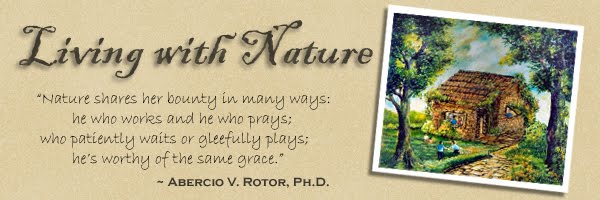
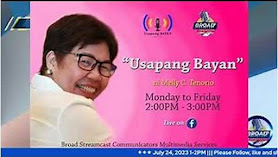




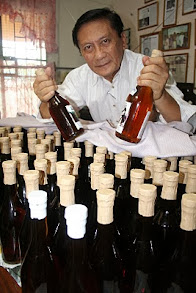

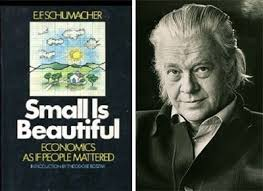











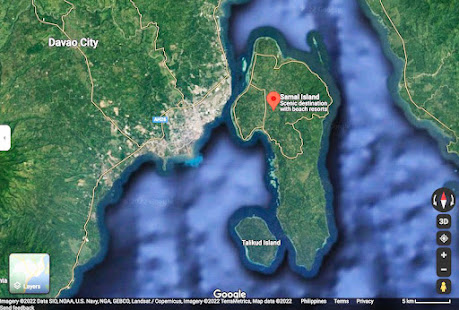




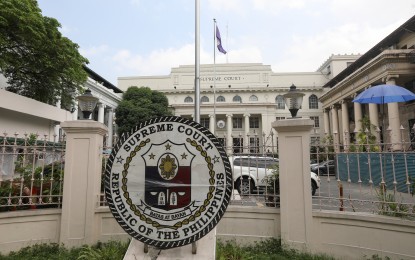































0137.JPG)
0007.JPG)









